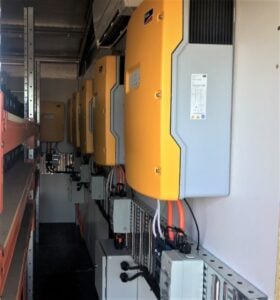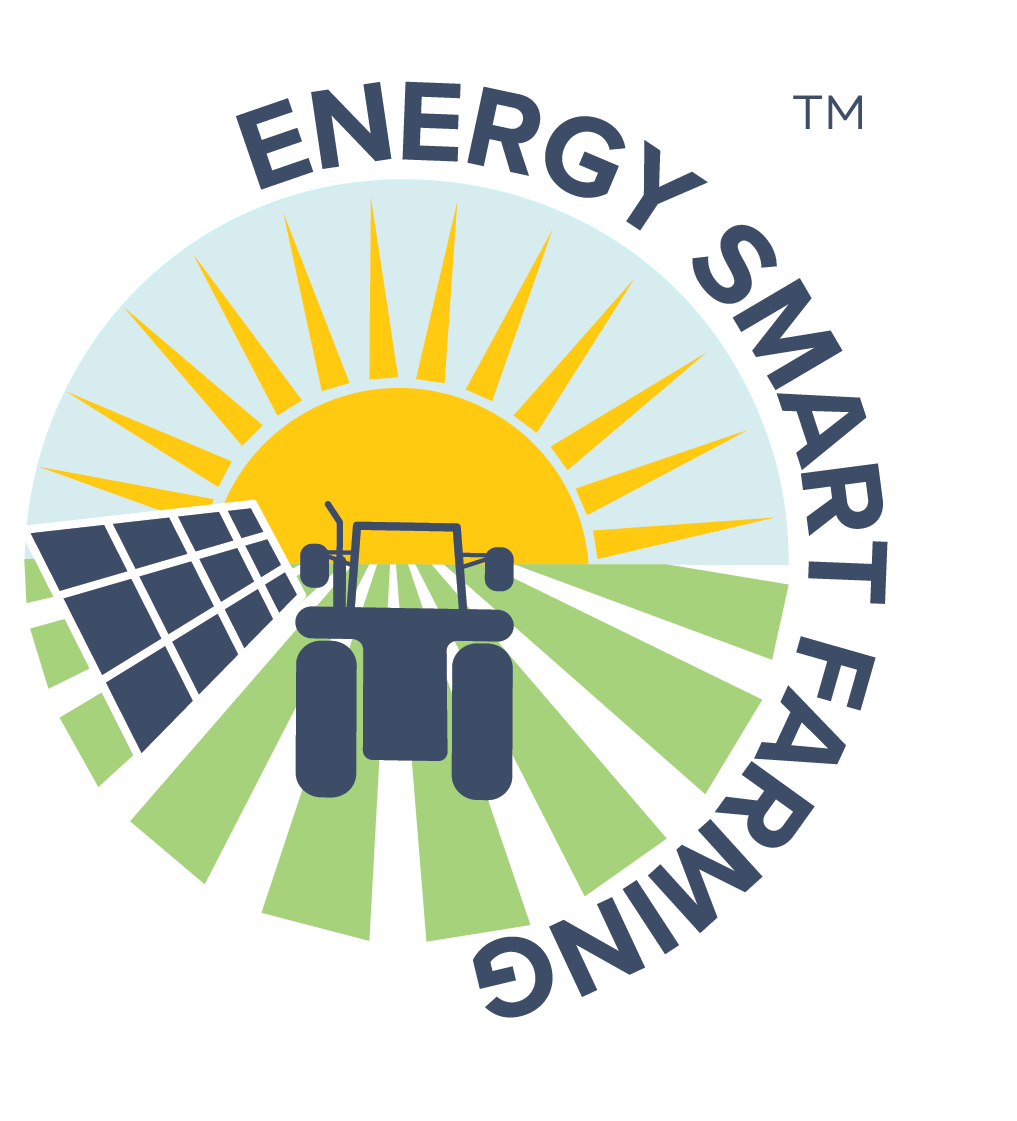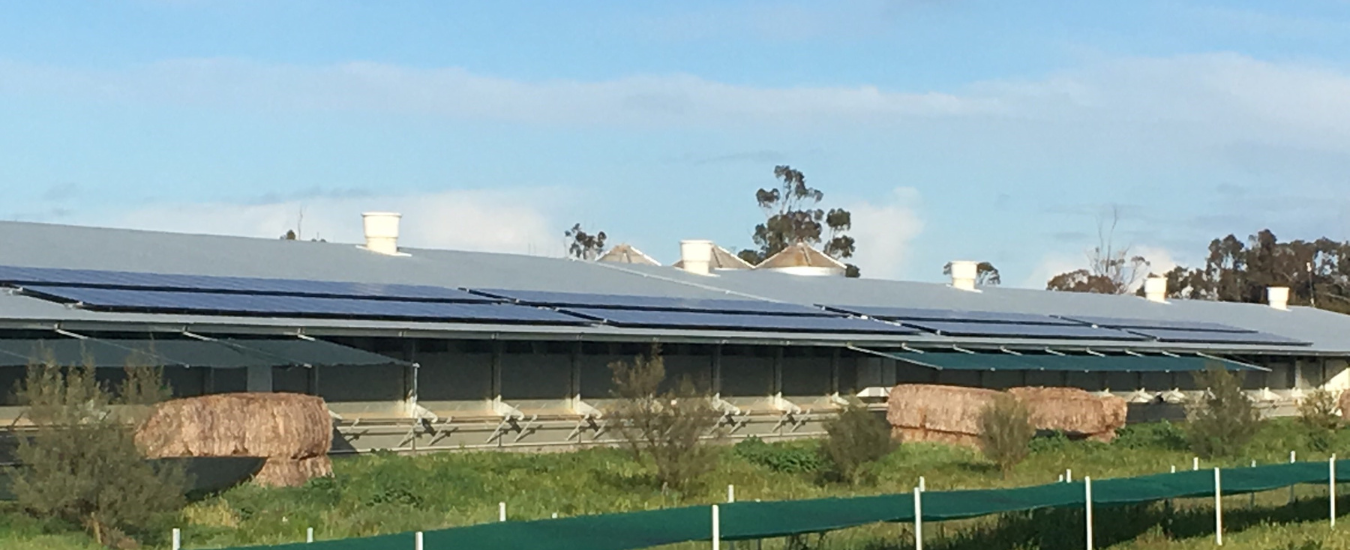The Darcra Poultry Farm in Victoria’s Wimmera was one of the first broiler farms in Australia to go completely off-grid – but with the rising cost of power, farmer Craig Henderson knows he won’t be the last. The Darcra enterprise, run by Craig Henderson and family, consists of 8000 hectares of dryland cropping (barley, wheat, lentils, peas, and hay) and a broiler farm (meat chickens) which began as a drought-mitigation strategy. The broiler farm, near Warracknabeal, has been operating off-grid since its establishment in 2016. The nearest three-phase power grid is 14 kilometres away from the farm. Connection to the grid to establish the broiler farm would have cost around $1 million. This cost meant the project (initially two broiler sheds) would not have been viable, hence the Henderson’s made the decision to proceed off-grid.
The energy use on the broiler farm is provided by a mix of solar power (with battery storage), diesel generators and LPG gas (for heating broiler sheds). The Henderson’s business model is built around maintaining a sustainable off-grid large scale broiler farm that has continuity of power supply for the sheds 24 hours a day, 365 days per year. The Hendersons have chosen to remain off-grid as their broiler farm has expanded. From the original two sheds, their broiler farm has grown to produce 1.5 million free range birds per year from six climate-controlled sheds (where the birds are free to roam outside or seek shelter as they want). The Hendersons may potentially add at least another 10 sheds over the next decade. The broiler farm is RSPCA approved and the meat chickens’ diet excludes animal protein and antibiotics. The family’s long-term goal is for a sustainable, carbon neutral production system. As a co-benefit of the broiler farm, around three to four thousand tonnes of the spent bedding (mixture of chicken manure and straw) from the broiler sheds is applied to their land each year to substitute some of the synthetic fertiliser used in the Darcra cropping program.
The opportunity
Poultry farming systems are very energy intensive, with energy required for shed heating, cooling, ventilation and lighting. To maintain a healthy environment for the growing chickens, the Darcra sheds are ventilated and kept at optimum temperatures (20°to 30°C, depending on the age of the chickens). Heating then cooling are the largest energy uses for the broiler farm. LPG gas is the sole energy source for heating the sheds. The cooling system (using electricity) is operated in hotter times during the day and more heavily in summer. In 2019, the Hendersons undertook a free on-farm Energy Assessment offered as part of the Victorian Government’s Agriculture Energy Investment Plan (AEIP). Craig says “the AEIP process provided insight into where energy efficiencies and cost savings could be made now and into the future. This allows Darcra to remain competitive, maintain our marketing edge with enviromentally aware consumers – so we continue to thrive and grow as a sustainable operation”. At that time, the existing solar and battery system (120kW solar Photovoltaic (PV) panels/ 214kWh battery storage) was meeting approximately half of the broiler farm’s electricity needs, with the balance provided by diesel generators.

Photo: Batteries in the Dacra sheds
The technology
With AEIP grant assistance, an additional 100kW solar PV and 328kWh (plasma) battery system was installed in 2020.
The Outcome
The capital investment cost for both solar and battery systems (installed in 2016 and 2020) is less than would otherwise have been the case if the Henderson’s had chosen to connect to the grid. Craig said “installing the new system has effectively doubled our usable solar generated electricity and substantially reduced our need for diesel electricity generation across our broiler operation. With our solar and battery capacity, diesel consumption (that would otherwise have been required to run the broiler farm) is effectively 40-50 per cent lower.” Darcra is also planning a change from LPG to renewables for long term sustainability of the heating aspect of the broiler farm. “Our next step is to minimise the use of LPG gas for heating the sheds. This will be done by converting the existing boilers and heating these via solar power. This will deliver significant energy savings at a minimal cost, as well as delivering environmental benefits.”
Table 1: Investment costs and benefits of new energy saving technologies
| Technology | Investment Cost | Benefits | Modelled annual benefits | Payback (discounted) |
|---|---|---|---|---|
| Solar and Battery | $343,000 | Diesel & other | $50,000 | 9.1 years |
The last word
“If you have a choice to install energy technology that is cost neutral (or better), and it has environmental benefits – why wouldn’t you choose to do it? Our off-grid system provides us with greater control over our future electricity costs. This would not be the case if we had connected to the grid and were exposed to ongoing increases in electricity prices. We would also have been paying a lot for grid electricity in peak times – since it is essential that the climate control systems in our grower sheds are operating 24/7. Solar panels and battery storage provide a more sustainable approach to obtaining energy for our operation. It was a big investment – but one that delivers large benefits. The system is meeting all our expectations and demonstrates what can be achieved in taking energy-intensive farming off the grid.”
Download a copy of this case study – Sustainable off-grid poultry farming.pdf



